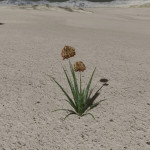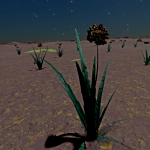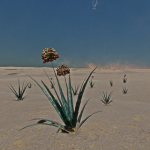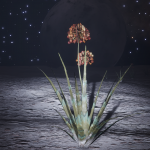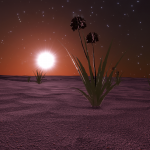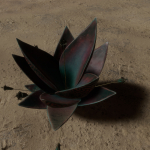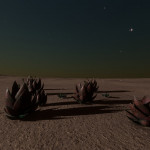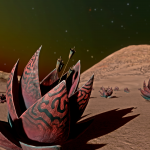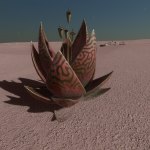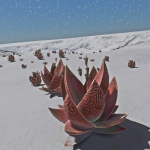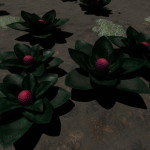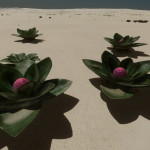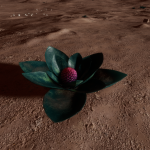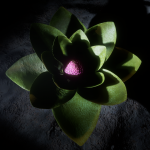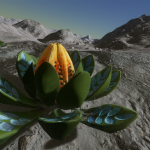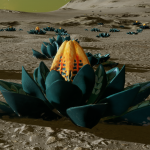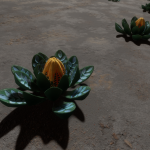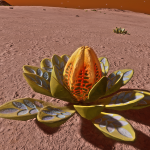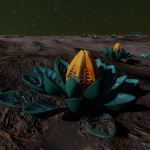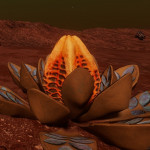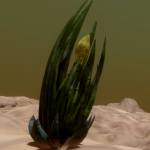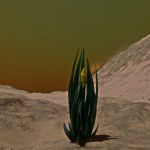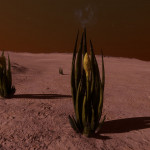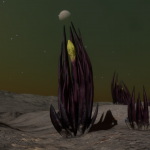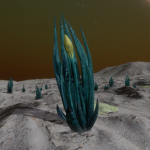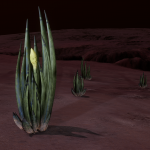Aleoida genus
Description
Extremely hardy photosynthetic organisms that thrive in arid environments. Thick, waxy leaf structures protect them from extreme surroundings. When gaseous exchange becomes unfavourable. the leaves can completely shut off the organism from the atmosphere causing a state of hibernation. The pointed leaves create precipitation slopes, which draw liquids to the heart of the organism. Here they are absorbed through a series of specialised cells, and stored in the root structure until needed.
Minimum distance between two genetic samples: 150 m
Conditions of occurrence
- Planets with thin atmosphere of Carbon dioxide or Ammonia
- Because of the types of atmospheres: only Rocky or High Metal Content planets
- Maximum gravity: 0.27
| Atmosphere type | Species |
|---|---|
| Ammonia | Aleoida laminiae Aleoida spica |
| Carbon dioxide Carbon dioxide rich | Aleoida arcus (temperature between 175 K and 180 K) Aleoida coronamus (temperature between 180 K and 190 K) Aleoida gravis (temperature between 190 K and 195 K) |
Colored variants
Colored variant is determined by the parent star type
| Star Type | Color |
|---|---|
| O | |
| B | Yellow |
| A | Green |
| F | Teal |
| G | |
| K | Turquoise |
| M | Emerald |
| L | Lime |
| T | Sage |
| TTS | Mauve |
| Y | Teal |
| W | |
| D | |
| N | Ocher |
Aleoida arcus
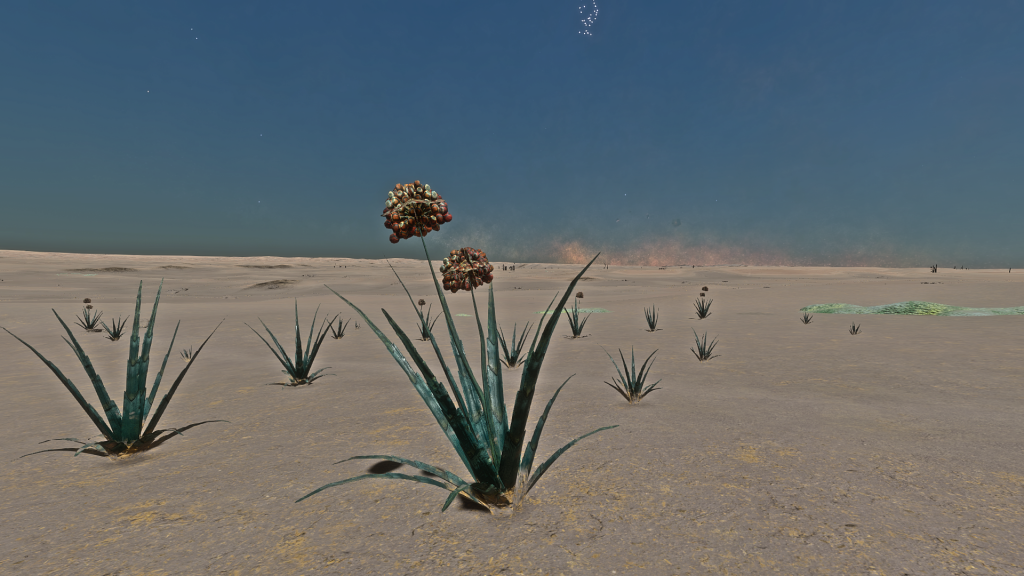
Description
This aleoida species has upright clumps of long serrated leaves, which can open up to expose a reproductive organ containing tiny round seeds.
Conditions of occurrence
- Planets with thin Carbon dioxide atmosphere
- Maximum gravity: 0.27
- Mean temperature between 175 K and 180 K
Colored variants
Colored variant determined by the parent star type (see above, genus Aleoida)
Aleoida coronamus
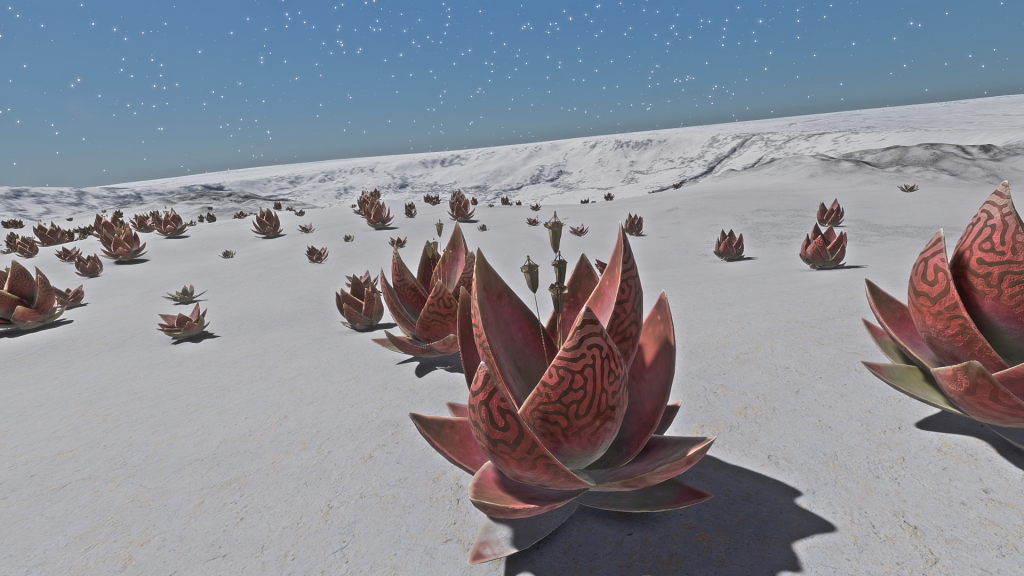
Description
This interleaved crown of mottled leaves can grow to head height, with explosive seed pods emerging on long protruding stalks.
Conditions of occurrence
- Planets with thin Carbon dioxide atmosphere
- Maximum gravity: 0.27
- Mean temperature between 180 K and 190 K
Colored variants
Colored variant determined by the parent star type (see above, genus Aleoida)
Aleoida gravis
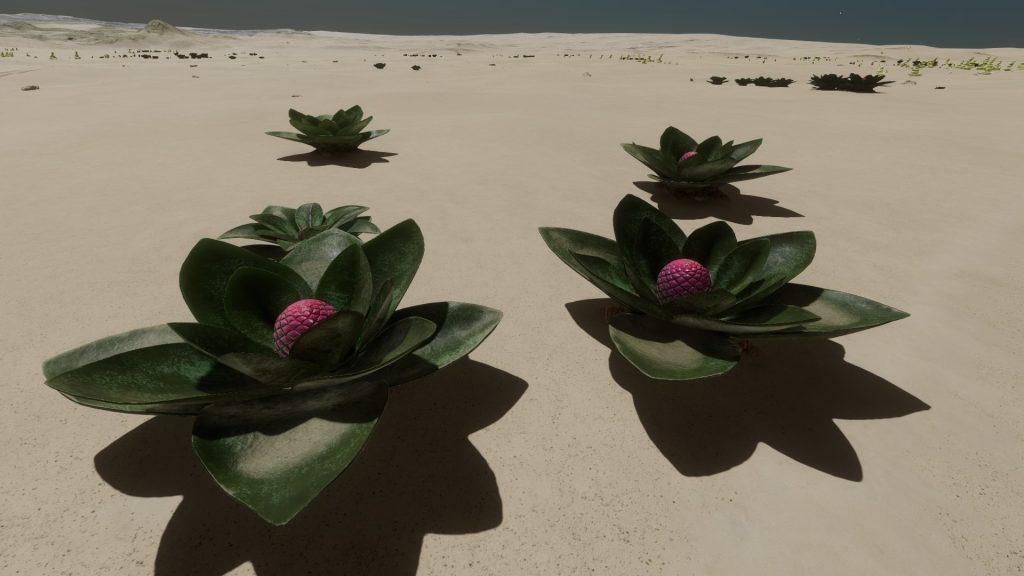
Description
These aleoida’s wide flat leaves on a heavy bark base can reach huge sizes. and sprout a dome-shaped reproductive organ at their peak.
Conditions of occurrence
- Planets with thin Carbon dioxide atmosphere
- Maximum gravity: 0.27
- Mean temperature between 190 K and 195 K
Colored variants
Colored variant determined by the parent star type (see above, genus Aleoida)
Aleoida laminiae
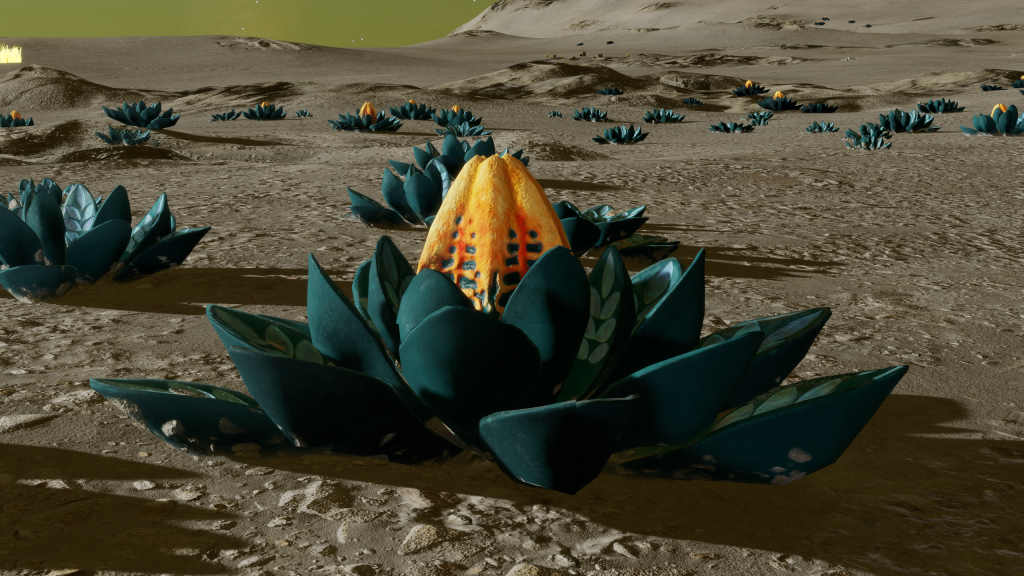
Description
These aleoida have a circle of upturned leaves marked with patterns, surrounding a bright fleshy pod with darker markings which matures in their centre.
Conditions of occurrence
- Planets with thin Ammonia atmosphere
- Maximum gravity: 0.27
Colored variants
Colored variant determined by the parent star type (see above, genus Aleoida)
Aleoida spica
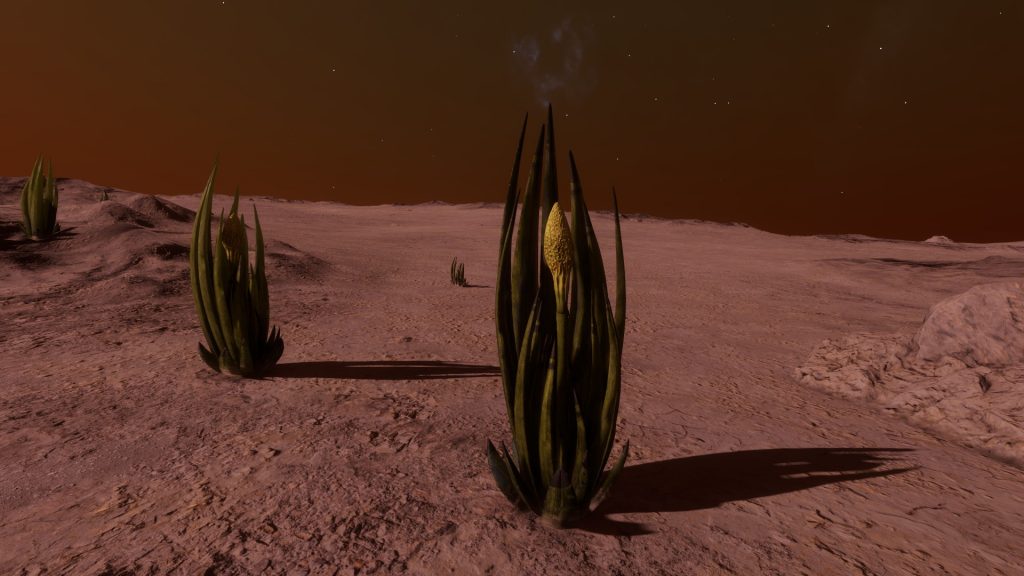
Description
An aleoioa species with long spiky leaves that can reach over two metres high surrounding a single reproductive organ on a long central stalk.
Conditions of occurrence
- Planets with thin Ammonia atmosphere
- Maximum gravity: 0.27
Colored variants
Colored variant determined by the parent star type (see above, genus Aleoida)
